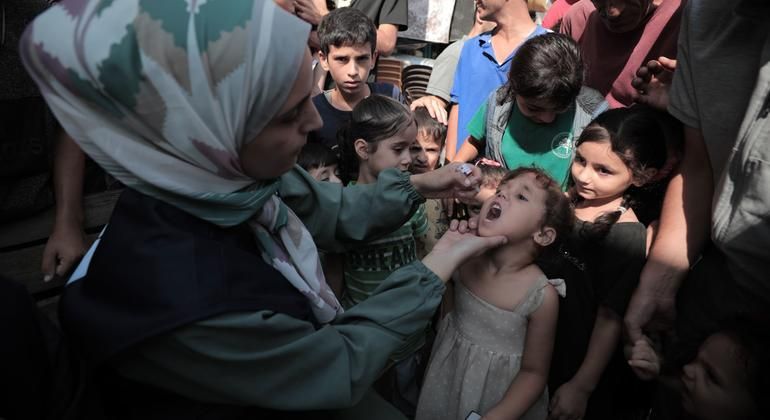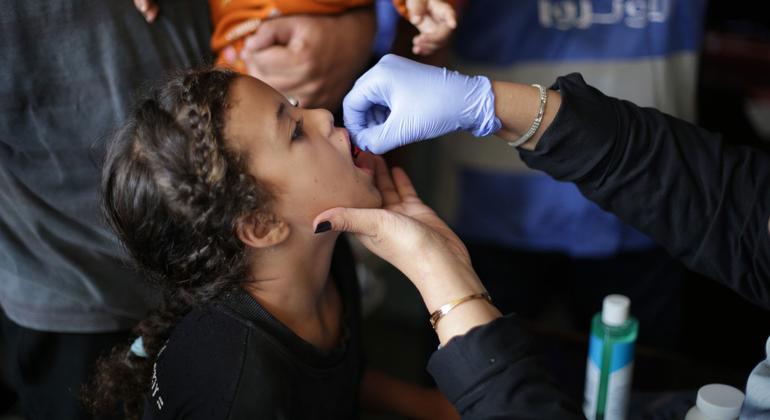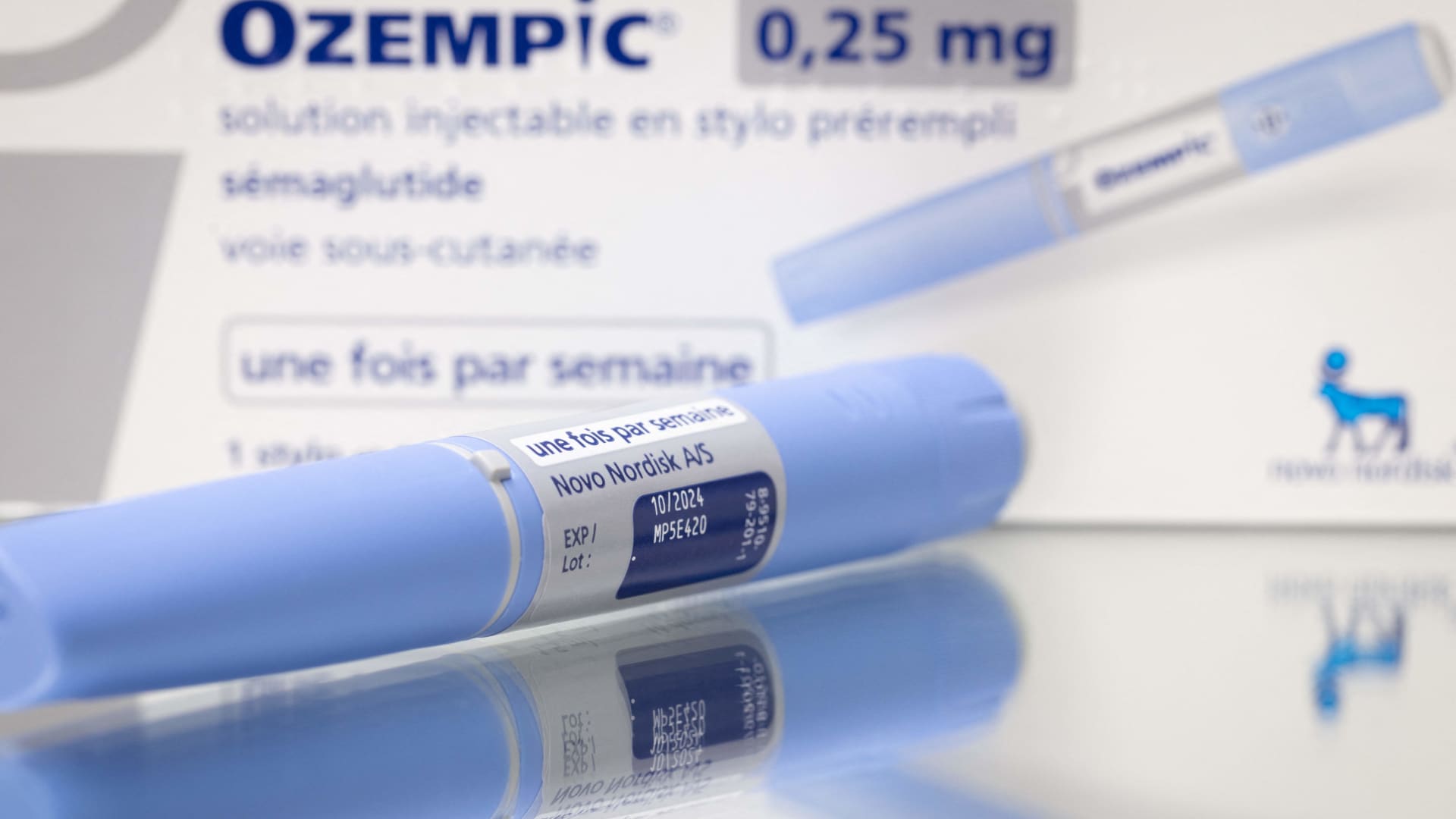It has been almost 11 months since war broke out in the enclave following Hamas-led terror attacks in Israel. Today, more than nine out of ten people have been forcibly displaced by the fighting, leaving them vulnerable to hunger, malnutrition and disease.
“So far, we have been able to vaccinate 187,000 children and we have been from tent to tent and shelter to shelter,” said Louise Wateridge of the UN agency for Palestine refugees, UNRWA.
“The reality is that these vaccinations are taking place in the middle of a war zone, while many other diseases, such as hepatitis A, are spreading,” explained the UNRWA spokesperson.
“Most of the children I have seen are covered in skin diseases and rashes.“So while we do everything we can to vaccinate against one disease, the inhumane conditions that cause and spread these diseases continue.”
Health hazards
The UNRWA spokesman described the scene at a health centre where sewage had flooded surrounding streets, forcing children to avoid the health hazard to receive their polio vaccinations.
“People need everything, in addition to polio vaccines, medical supplies, hygiene products and clean water, which are absolutely essential to stop the spread of the disease,” Wateridge insisted.
“What people need most is a ceasefire and they need it now.“
Wednesday marks the last day of vaccinations in central Gaza, which aid workers say has been a resounding success. In addition to UNRWA, the operation is a joint effort between the UN, the World Health Organization (WHO), the United Nations Children's Fund (UNICEF), partner NGOs and volunteers.
Despite the constant threat of strikes, families have taken their children to health centres and schools for the first of two vaccinations, a legacy of the enclave's strong support for vaccinations before the war. For those unable to travel easily, aid teams have sought out vulnerable families and children to ensure that all children under 10 receive their dose.
“It has been very positive to see the children come out, showing us their little finger with a colored marker to proudly show that they have received this vaccine“, Ms Wateridge said.
No rest for health teams
After working four days straight on the vaccination campaign in the Middle Zone, some 2,200 health workers will move to southern Gaza to resume their work on Thursday morning.
Once this is done, efforts will turn north, before the whole process restarts in four weeks, to administer the second vaccine to increase protection levels.
Vaccination teams are able to work in a certain level of safety thanks to humanitarian pauses agreed with the Israeli army and Hamas fighters from 8 a.m. to 2 p.m., although the violence has by no means ceased.
“The breaks are welcome, but the bombings and attacks have not stopped… our teams set out to vaccinate, surrounded by the sound of the attacks.“, the UNRWA official explained.
“While I cannot determine the location of the impacts I can hear around me in the central area, hearing them is disconcerting for children and families, as well as health workers distributing polio vaccines.”
Childhood tragedy
In a related event in Geneva, The UN Committee on the Rights of the Child heard Israeli representatives condemn Hamas for the “tragic” cost the war has had on children.
Israel’s ambassador to Geneva, Daniel Meron, told the panel of independent human rights experts taking part in a review of the country scheduled for Tuesday that Hamas was “embedded within the civilian population,” with tunnels located “in children’s dormitories in Gaza” and beneath schools, serving as “weapons arsenals and rocket launching sites.”
“Weapons have been found under cribs, inside teddy bears, in maternity wards, in hospitals.“he told the committee, which reports to the Human Rights Council and whose members are not UN staff.












